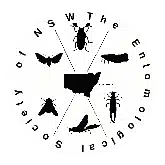- General and Applied Entomology is usually published annually, subject to availability of suitable papers.
- Entomological contributions of a high standard will be eligible for consideration for publication if submitted by a member of the Entomological Society of New South Wales. Material by non-members may be submitted through a member of the Society, but preference may be given to members’ manuscripts at the discretion of the editor in consultation with Council.
- Manuscripts. Manuscripts may be submitted as MSWORD documents and TIFF files via the on-line submission system (http://entsocnsw.org.au/xxxxx or emailed to the Journal Editor (journaleditor@entsoc.org.au.
- The title is to be placed above the text on the first page followed by the author’s name and address. All manuscripts will be sent to at least one external referee. Up to 8 keywords should be provided and placed immediately following the Summary.
- Manuscripts unsuitable for publication will be returned to the author/s, who may be given an opportunity to revise their papers in light of editorial comment.
- No manuscript that has been published elsewhere, either wholly or in essential part, will be accepted for publication.
- Papers which exceed 20 printed pages may only be accepted at the discretion of Council.
- Style and Format. With regard to style and format, authors are referred to the most recent issue.. Font: Times New Roman.
- Tables must be grouped together at the end of the manuscript. The preferred location in the text must be indicated. Tables must be numbered consecutively using arabic numerals.
- Graphs, line drawings and photographs will be referred to as figures. They must be numbered consecutively whether appearing in groups or not. Numbering must be done in arabic numerals. Magnifications must be indicated by scale lines on the figures. Inclusion of magnifications in captions is not acceptable. Authors should send clear photographic copies of original line drawings or high resolution scanned image files. Originals are best submitted at 1.5 to 2 times the required size. Electron micrographs, photographs of sections, insects etc., should be submitted at the size authors wish them to be published. Labels should be in Times Roman font. Graphics submitted on electronically must be separate files, not embedded in the documents. They should be black and white only. JPG files are most acceptable.
- Colour work may be accepted by arrangement. The author may be required to pay additional printing costs.
- Nomenclature. The appropriate international rules of nomenclature should be used for all organisms. Names should be given in full with authorities when first used but may be abbreviated subsequently if there is no ambiguity. Common names should be avoided in titles and abstracts. Editorial policy will conform with the Articles and Recommendations of the International Code of Zoological Nomenclature.
- Common names of pesticides listed in ‘Pesticides Synonyms and Chemical Names’, latest edition, Australian Department of Health, Canberra, should be used where possible. Trade names, if used, should be placed in inverted commas and full chemical definition given when first mentioned.
- Units. The International System of Units should be used for exact measurement of physical quantities.
- References should be quoted as follows:-
Carter and Zeck (1937) or (Carter and Zeck 1937) and listed:-
Carter, H.J. and Zeck, E.H. (1937). A monograph of Australian Colydiidae. Proceedings of the Linnean Society of New South Wales. 62: 181-208.
Periodical titles should not be abbreviated. - For general information on the writing of scientific papers, reference may be made to the guides on the subject published by the CSIRO Melbourne.
- Proofs. No paper will be published until the author or his nominee has had an opportunity to read and correct a page proof. Prompt return of proof is requested. Authors are held responsible for correcting omissions or errors that can be checked against the original manuscript. Authors may be charged for correction of errors or alterations on the text for which the author is responsible.
- Page charges: Where at least one author is a financial member of the Entomological Society of NSW Inc. there is no charge. For unfinancial or non-members, charges are $40.00 per page if Black & White or $60.00 per page if coloured. No reprints are provided. After payment of page charges (if due), the Corresponding Author will be emailed a pdf version of their paper.
- All intending contributors should complete a copy of the Society’s ‘Conditions for levying of Page charges’, either on-line or by hard copy obtained from the Editor or Treasurer (email membership@entsocnsw.org.au) and return it to the Treasurer’s address.
NOTICE TO INTENDING CONTRIBUTORS, FOR GENERAL AND APPLIED ENTOMOLOGY (Gen. appl. Ent.)
CONDITIONS FOR LEVYING OF PAGE CHARGES
This notice is being issued to you (and to the Treasurer, Ent Soc NSW) by the Hon. Jounal Editor.
Please enter below the Authorship details of your manuscript submitted for peer review and the details of the Person/Institution responsible for paying any PAGE CHARGES that may be due and send the completed form to the Treasurer, Ent Soc NSW as per details at the end of this form.
Charges (levied only on published manuscripts), are $40 per black & white page and $60.00 per colour page.
All authors are entitled to receive pdf versions of their papers once Page charges (if due) are paid.
EXEMPTIONS: Page Charges are not levied where at least 0ne of the authors is a member of The Entomological Society of NSW.
A new individual Ordinary membership subscription fee is $45.00 per annum if paid prior to publication and by February for subsequent years, or $50.00 per annum if paid after publication or after the March AGM in subsequent years.
